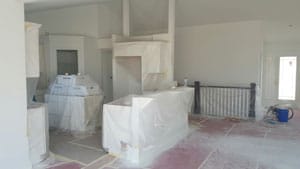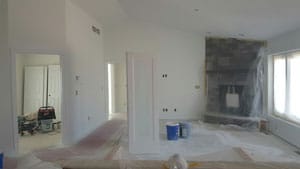Although interior painting typically represents just 3 to 3 ½ percent of custom home’s construction budget, it is an important aspect of the homebuilding process that requires careful consideration from homebuyers. Selecting the interior paint colors is part of the homeowners’ overall design concept, ensuring the ceilings and walls match other finishes in the home like cabinetry, countertops and flooring.

“This gives the homeowner the opportunity to match their wall colors to the design pallet they have envisioned,” says Todd DeLonge, construction manager for Lemel Homes. “There is a plethora of paint colors to choose from, so once they have other stuff hammered out, it is easier to choose paint.”
Among Lemel Homes’ clients, grays are most popular right now, and homeowners often adding a random accent color that “pops” on its own. Lemel Homes offers their clients the services of a color specialist, who can suggest accent wall and field colors to help homeowners achieve the feel and look they desire.
How it’s Done

From the builder’s standpoint, interior painting typically takes place once the drywall has been erected and has been sprayed for texture, such as a sand or orange peel finish. The painting subcontractor takes over from here, applying one coat of primer on all the walls and ceilings throughout the home.
Once the ceilings and walls have been primed, the finishing carpenters and other trades return to complete their work before the painting begins. According to DeLonge, this may seem out of order, but working in this manner eliminate the need for too many touchups later.
“If you prime everything, let it be and come back to paint it, it makes for a much nicer job,” DeLonge says. “It would be easier to paint right away, but it’s not worth it in the long run for the quality that you get.”
Prepping to Paint

Interior painting subcontractors do not have to deal with the elements like their outdoor colleagues, but special conditions must be put in place before painting begins. For example, DeLonge says the house must maintain a temperature of at least 45 degrees for interior painting. Also, the humidity level must be at a moderate level, and care must be taken to control humidity.”When it’s really hot in the summertime, humidity could be a problem, so you need to get the right amount of ventilation to get the humid air out,” DeLonge says. “But if humid air is getting in, you need to get the air conditioning up and running, and sometimes that isn’t installed in a home until the end of a project.”
The interior painting process typically takes two weeks to turn around. Painting subs also return to a home a few days before closing for any touchups that might be necessary.


